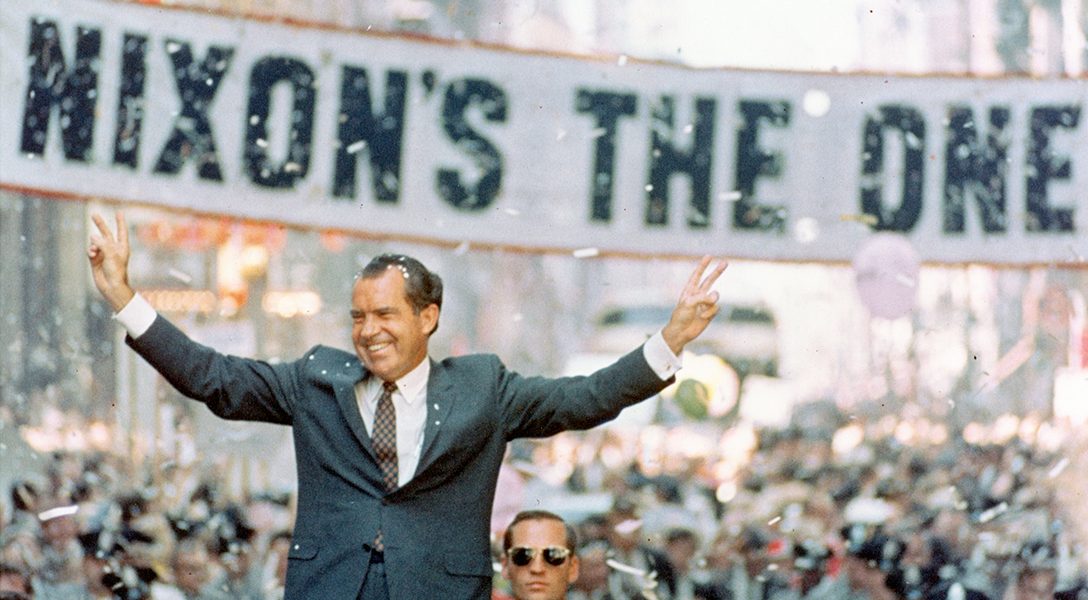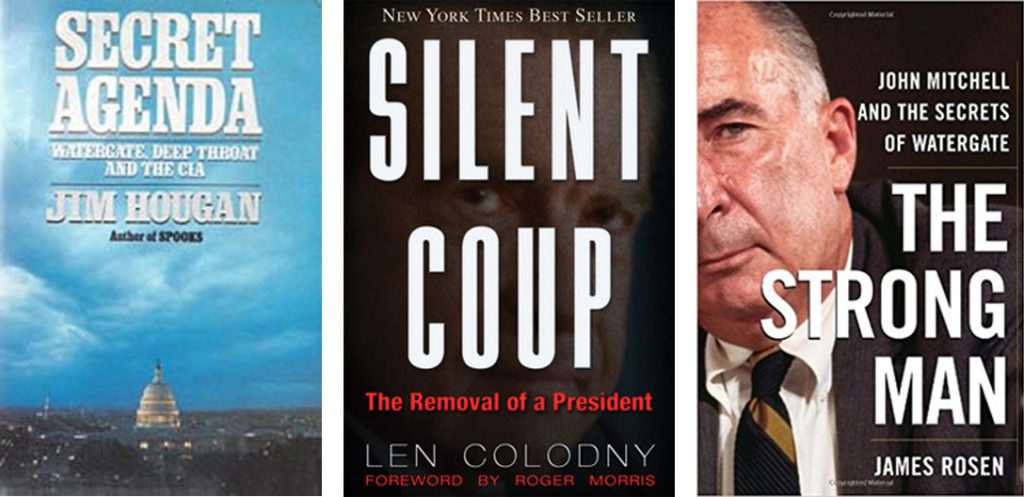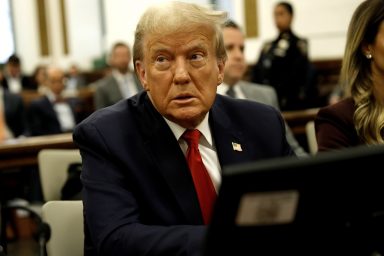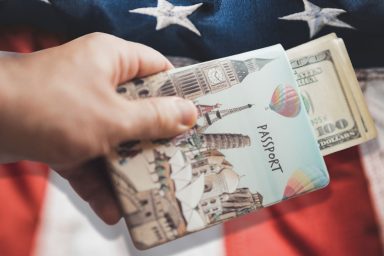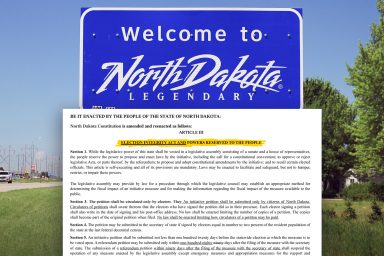Watergate and the Downing of Nixon, Part 4
Excerpt from the book, Family of Secrets
In Part 4, we see more and more tantalizing evidence of how much our perception of events, and of people, can be manipulated.
Over the years, we have been told, ad nauseum, that Richard Nixon was the ultimate culprit in Watergate. And Watergate has come to represent the ultimate in presidential overreach and perfidy.
Yet, no one has been able to explain the real purpose of the burglary with any certainty, or why the burglars committed such rookie errors, leading to their discovery and arrest — and, eventually, to Nixon’s downfall.
In fact, it is important to recall that there were two break-ins: a successful one to plant eavesdropping equipment, and a bungled one to remove that equipment. The latter was characterized by such blatantly unprofessional steps by a highly experienced, high powered team, that it begs the question: were they looking to get caught? And if so, why?
Then we must consider the role of CIA super-strategist and manipulator E. Howard Hunt. Had he, too, suddenly lost his faculties? And, finally, the acclaimed journalist, Bob Woodward, who, as we shall see in the excerpt below, is not exactly who he presents himself to be.
Today, another deeply unpopular president is on the ropes. He must be hoping that — on top of the mountain of things he did do that could be his undoing — he doesn’t also find himself blamed for something he in fact did not do.
For Part 1, go here; Part 2, here; Part 3, here.
Excerpted from Russ Baker’s Family of Secrets: The Bush Dynasty, America’s Invisible Government and the Hidden History of the Last Fifty Years.
Notes: (1) Although these excerpts do not contain footnotes, the book itself is heavily footnoted and exhaustively sourced. (2) To distinguish between George Bush, father and son, George H.W. Bush is sometimes referred to by his nickname Poppy, and George W. Bush by his, W. (3) Additional context can be found in the preceding chapters.
Layers and Layers
..
If most of us ever knew, we have probably long since forgotten that before the June 1972 Watergate break-in, there was another Watergate break-in by the same crew.
With this earlier one, though, they were careful to avoid detection and were not caught. At that time, they installed listening devices. The second burglary, the one that seemingly was designed for detection, and designed to be traced back to the Nixon White House, ostensibly revolved around removing listening devices installed earlier — and therefore drawing attention to the devices and the surveillance.
The conclusion one would likely draw from their being caught red-handed is that Dick Nixon is up to yet another manifestation of his twisted and illegal inclinations. And what were they listening to? Purportedly, DNC personnel were arranging for “dates” for distinguished visitors with a call-girl ring. The ring was operating from down the street, not far from where the bugs were being monitored. The conclusion is that Nixon was perhaps trying to sexually blackmail the Democrats. It got more and more objectionable.
But the fact is that no evidence shows Nixon wanting to sexually blackmail Democrats, nor wanting to install bugs at the DNC, nor wanting to order a burglary to remove the bugs.
Yet somebody else clearly had a good imagination, and a talent for executing a script that was magnificently inculpatory of someone who would appear to deserve removal from the highest office in the land.
Eventually, Americans would learn that the Watergate break-ins were not the first such operation that made Nixon look bad, and not the first coordinated by Hunt [E. Howard Hunt of the CIA] and featuring Cuban veterans of the Bay of Pigs invasion.
Back in September 1971, the team hit the Beverly Hills office of Dr. Lewis Fielding, the psychiatrist of Daniel Ellsberg, the whistle-blower who leaked the explosive Pentagon Papers to The New York Times. First, though, Nixon, who was initially indifferent over the leak, was persuaded to take on the Times for publishing the documents, a posture that would position him as a foe of public disclosure. It also escalated his already adversarial relationship with the news media — a relationship that would become a severe disadvantage to Nixon as the Watergate “revelations” began to emerge.
Nixon was also persuaded to authorize the formation of a leak-busting White House group, which was soon dubbed “the Plumbers.” Soon, purportedly operating on Nixon’s behalf — but without his actual approval — the Hunt team broke into Dr. Fielding’s office, having been told to photograph Ellsberg’s patient files.
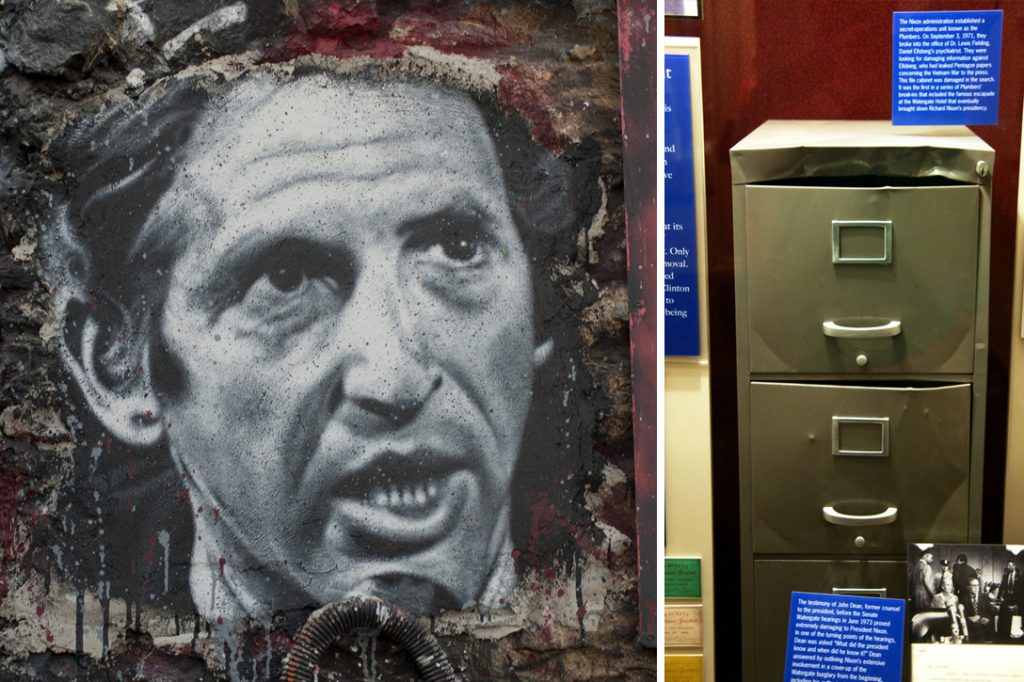
Daniel Ellsberg graffiti. The filing cabinet from the office of Dr. Lewis Fielding which was broken into by E. Howard Hunt, G. Gordon Liddy, Eugenio Martinez, Felipe de Diego, and Bernard Barker on September 3, 1971. Photo credit: thierry ehrmann / Flickr (CC BY 2.0) and Tim Evanson / Flickr (CC BY-SA 2.0)
However, as with Watergate, the burglary appears to have had an ulterior motive. Senator Baker, ranking Republican on the Senate Watergate Committee, learned of this, according to White House special counsel Charles Colson, when Baker interviewed the Cuban émigré Eugenio Martinez, who participated in the burglaries of both Fielding’s office and the DNC office in Watergate:
Baker told me of his interview with Martinez who said that there were no patient records in Dr. Fielding’s office, that he, Martinez, was very disappointed when they found nothing there, but Hunt on the other hand seemed very pleased and as a matter of fact broke out a bottle of champagne when the three men returned from the job. Martinez says that he has participated in three hundred or four hundred similar CIA operations, that this was clearly a ‘cover’ operation with no intention of ever finding anything.
In fact, though the burglars were ostensibly seeking records while on a covert mission, they did not act like people who wished to avoid discovery. In addition to smashing the windows and prying open the front door with a crowbar, the burglars proceeded to vandalize the office, scattering papers, pills, and files across the floor. The result was to ensure the generation of a crime report, establishing a record of the burglary. The break-in would not become public knowledge until John Dean dramatically revealed it two years later — and implicitly tied Nixon to it by citing the involvement of Egil Krogh, the man in charge of Nixon’s so-called Plumbers unit.
Dean and his lawyers showed far greater enthusiasm for pursuing the Beverly Hills break-in than even the prosecutors. As Renata Adler wrote in the New Yorker: “Dean’s attorney, Charles Shaffer, practically had to spell it out to [the prosecutors] that they would be taking part in an obstruction of justice themselves if they did not pass the information on.”
Like Watergate, the Fielding office break-in was on its face a very bad idea that was not approved by Nixon but certain to deeply embarrass him and damage his public standing when it was disclosed. The principal accomplishment of the break-in was to portray Nixon as a man who had no decency at all — purportedly even stooping to obtain private psychiatric records of a supposed foe. This was almost guaranteed to provoke public revulsion.
The notion that a group surrounding the president could be working to do him in might sound preposterous to most of us. But not to veterans of America’s clandestine operations, where the goal abroad has often been to do just that.
And Nixon was a perfect target: solitary, taciturn, with few friends, and not many more people he trusted. Because of this, he had to hire virtual strangers in the White House, and as a result, the place was teeming with schemers. Nixon was too distrustful, and yet not distrustful enough. It was supremely ironic.
Nixon, ridiculed for his irrational hatred and “paranoia” toward the Eastern Establishment, may in the end have been done in by forces controlled by that very establishment.
Of course, it was nothing less than that level of power to remove presidents, plural, one after the other if necessary.
Among the myriad plots was the so-called Moorer-Radford affair, cited in chapter 9, in which the military actually was spying on Nixon and stealing classified documents in an attempt to gain inside information, influence policy, and perhaps even unseat the president.
That Nixon could actually have been the victim of Watergate, and not the perpetrator, will not sit well with many, especially those with a professional stake in Nixon’s guilt. Yet three of the most thoroughly reported books on Watergate from the past three decades have come to the same conclusion: that Nixon and/or his top aides were indeed set up.
Each of these books takes a completely different approach, focuses on different aspects, and relies on essentially different sets of facts and sources. These are: 1984’s Secret Agenda, by former Harper’s magazine Washington editor Jim Hougan; 1991’s Silent Coup, by Len Colodny and Robert Gettlin; and 2008’s The Strong Man, by James Rosen.
Rosen’s The Strong Man: John Mitchell and the Secrets of Watergate is a biography of Nixon’s close friend, attorney general, and campaign chief, the highest-ranking official ever to be sentenced to prison. The book, on which Rosen labored for seventeen years, is based on sources not previously interviewed and also on unprecedented access to documents generated by the Senate Watergate Committee and Watergate special prosecutors. Rosen asserts that the Watergate operation was authorized behind Mitchell’s back by his subordinate Jeb Magruder and by John Dean and was deliberately sabotaged in its execution by burglar and former CIA officer James McCord. As Rosen puts it:
Mitchell knew he had been set up. In later years, his mind reeled at the singular confluence of amazing characters that produced Watergate — Dean, Magruder, Liddy, Helms, Hunt, McCord, Martinez — and reckoned himself and the president, neither of whom enjoyed foreknowledge of the Watergate break-in, victims in the affair. “The more I got into this,” Mitchell said in June 1987, “the more I see how these sons of bitches have not only done Nixon in but they’ve done me in.”
Rosen also writes:
The [Watergate] tapes unmasked Nixon not as the take-charge boss of a criminal conspiracy but rather as an aging and confused politician lost in a welter of detail, unable to distinguish his Magruders from his Strachans, uncertain who knew what and when, what each player had told the grand jury, whose testimony was direct, whose hearsay.
My independent research takes the argument one step further, and the facts in a completely new direction. It leads to an even more disturbing conclusion as to what was really going on, and why.
Woodward at His Post
.
The accepted narrative of Nixon as the villain of Watergate is based largely on the work of Bob Woodward and Carl Bernstein. They both were young reporters on the Washington Post’s Metro desk when the story fell into their laps. When it was over, they were household names. Woodward in particular would go on to become the nation’s most visible investigative journalist, and indeed the iconic representation of that genre.
The work of “Woodstein” would play a key role in enhancing the franchise of the Post itself. Yet this oeuvre — in particular the role of Woodward — has become somewhat suspect among those who have taken a second and third look — including Columbia Journalism Review contributing editor Steve Weinberg, in a November/December 1991 article.
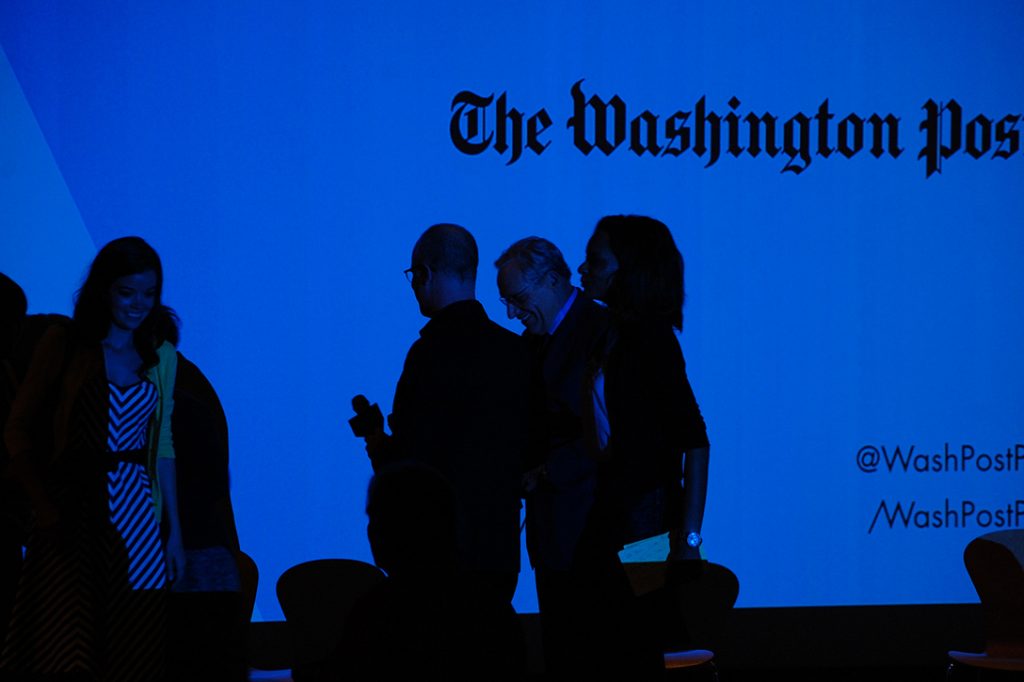
Bob Woodward, 2013. Photo credit: BKL / Flickr (CC BY-NC 2.0)
Woodward did not fit the profile of the typical daily print reporter. Young, midwestern, Republican, he attended Yale on an ROTC scholarship and then spent five years in the Navy. He had begun with a top-secret security clearance on board the USS Wright, specializing in communications, including with the White House.
His commanding officer was Rear Admiral Robert O. Welander, who would later be implicated in the military spy ring in the Nixon White House, mentioned in chapter 9. According to Silent Coup, an exhaustive study of the military espionage scandal, Woodward then arrived in Washington, where he worked on the staff of Admiral Thomas Moorer, chief of naval operations, again as a communications officer, this time one who provided briefings and documents to top brass in the White House on national security matters. According to this account, in 1969-70, Woodward frequently walked through the basement offices of the White House West Wing with documents from Admiral Moorer to General Alexander Haig, who served under Henry Kissinger.
In a 2008 interview, Woodward categorically denied having any intelligence connections. He also denied having worked in the White House or providing briefings there. “It’s a matter of record in the Navy what I did, what I didn’t do,” Woodward said. “And this Navy Intelligence, Haig and so forth, you know, I’d be more than happy to acknowledge it if it’s true. It just isn’t. Can you accept that?”
Journalist Len Colodny, however, has produced audiotapes of interviews by his Silent Coup coauthor, Robert Gettlin, with Admiral Moorer, former defense secretary Melvin Laird, Pentagon spokesman Jerry Friedheim — and even with Woodward’s own father, Al — speaking about Bob’s White House service.
At a minimum, Woodward’s entry into journalism received a valuable outside assist, according to an account provided by Harry Rosenfeld, a retired Post editor, to the Saratogian newspaper in 2004:
Bob had come to us on very high recommendations from someone in the White House. He had been an intelligence officer in the Navy and had served in the Pentagon. He had not been exposed to any newspaper. We gave him a tryout because he was so highly recommended. We customarily didn’t do that. We wanted to see some clips, and he had none of that. We tried him out, and after a week or two I asked my deputy, “What’s with this guy?” And he said well, he’s a very bright guy but he doesn’t know how to put the paper in the typewriter. But he was bright, there was that intensity about him and his willingness, and he acted maturely. So we decided because he had come so highly recommended and he had shown certain strengths that we would help get him a job at the Montgomery County Sentinel.
In 2008, some time after I spoke to Woodward, I reached Rosenfeld. He said he did not recall telling the Saratogian that Woodward had been hired on the advice of someone in the White House. He did, however, tell me that he remembered that Woodward had been recommended by Paul Ignatius, the Post’s president. Prior to taking over the Post’s presidency, Ignatius had been Navy secretary for President Johnson.
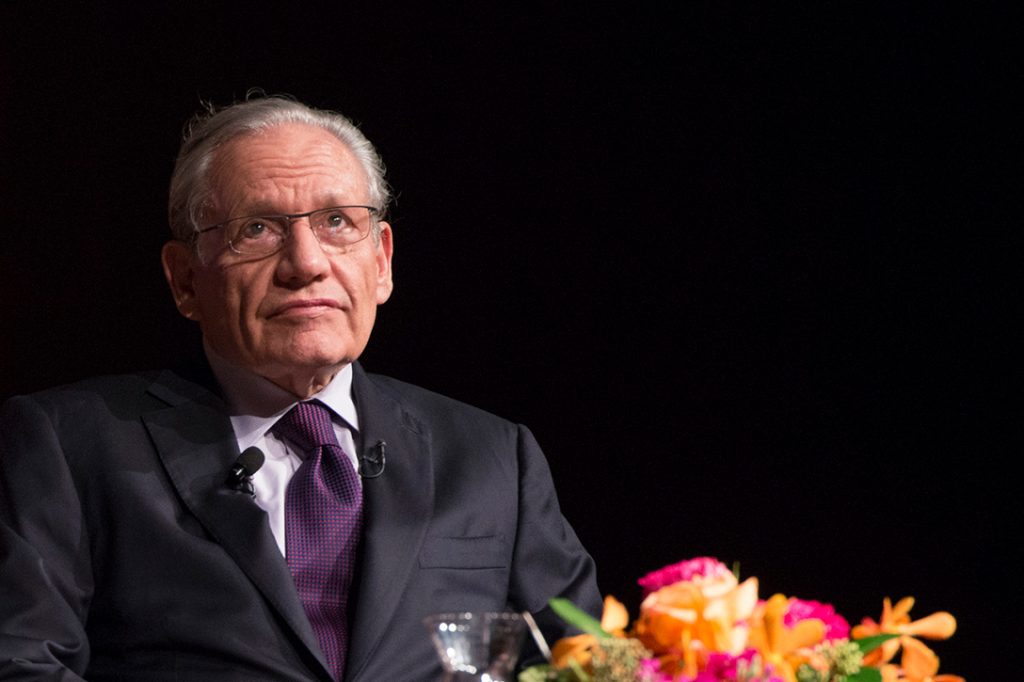
Bob Woodward Photo credit: LBJ Library / Flickr (Public Domain Mark 1.0)
In a 2008 interview, Ignatius told me it was possible that he had a hand in at least recommending Woodward. “It’s possible that somebody asked me about him, and it’s possible that I gave him a recommendation,” Ignatius said. “I don’t remember initiating anything, but I can’t say I didn’t.” I asked Ignatius how a top Pentagon administrator such as himself would even have known of a lowly lieutenant, such as Woodward was back in those days, and Ignatius said he did not recall.
In September 1971, after one year of training at the Maryland-based Sentinel, Woodward was hired at the Washington Post. The Post itself is steeped in intelligence connections. The paper’s owner, the Graham family, were, as noted in chapter 3, aficionados of the apparatus, good friends of top spies, and friends also of Prescott Bush. They even helped fund Poppy Bush’s earliest business venture. Editor Ben Bradlee was himself a Harvard graduate who, like Woodward, had spent time in naval intelligence during World War II. (As noted earlier, Poppy Bush had also been associated with naval intelligence during World War II: prior to beginning his work with the CIA, he had been involved with top-secret aerial reconnaissance photography.)
Woodward demonstrated his proclivity for clandestine sources a month before the Watergate break-in, in his coverage of the shooting and serious wounding of presidential candidate George Wallace at a shopping center in Washington’s Maryland suburbs. A lone gunman, Arthur Bremer, would be convicted. Woodward impressed his editors with his tenacity on the case, and his contacts. As noted in a journalistic case study published by Columbia University:
At the time, according to [Post editors Barry] Sussman and [Harry] Rosenfeld, Woodward said he had “a friend” who might be able to help. Woodward says his “friend” filled him in on Bremer’s background and revealed that Bremer had also been stalking other presidential candidates.
As to Woodward’s initial introduction to the newspaper, nobody seems to have questioned whether a recommendation from someone in the White House would be an appropriate reason for the Post to hire a reporter. Nor does anyone from the Post appear to have put a rather obvious two and two together, and noted that Woodward made quick work of bringing down the president, and therefore wondered who at the White House recommended Woodward in the first place — and with what motivation.
Others, however, were more curious. After Charles Colson met with Senator Howard Baker and his staff — including future senator Fred Thompson — he recounted the session in a previously unpublished memo to file:
The CIA has been unable to determine whether Bob Woodward was employed by the agency. The agency claims to be having difficulty checking personnel files. Thompson says that he believes the delay merely means that they don’t want to admit that Woodward was in the agency. Thompson wrote a lengthy memo to Baker last week complaining about the CIA’s non-cooperation, the fact that they were supplying material piecemeal and had been very uncooperative. The memo went into the CIA relationship with the press, specifically Woodward. Senator Baker sent the memo directly to [CIA Director] Colby with a cover note and within a matter of a few hours, Woodward called Baker and was incensed over the memo. It had been immediately leaked to him.
Woodward’s good connections would help generate a series of exclusive-access interviews that would result in rapidly produced bestselling books. One was Veil: The Secret Wars of the CIA, 1981-1987, a controversial book that relied in part, Woodward claimed, on a deathbed interview — not recorded — with former CIA director William Casey. The 543-page book,which came out as Poppy Bush was seeking the presidency, contained no substantive mentions of any role on the part of Bush in these “secret wars,” though Bush was both vice president with a portfolio for covert ops and a former CIA director.
Asked how it was possible to leave Bush out of such a detailed account of covert operations during his vice presidency, Woodward replied, “Bush was, well, I don’t think he was — What was it he said at the time? I was out of the loop?” Woodward went on to be blessed with unique access to George W. Bush — a president who did not grant a single interview to America’s top newspaper, the New York Times, for nearly half his administration — and the automatic smash bestsellers that guaranteed. Woodward would also distinguish himself for knowing about the administration’s role in leaking the identity of CIA undercover officer Valerie Plame but not writing or saying anything about it, despite an ongoing investigation and media tempest. When this was revealed, Woodward issued an apology to the Post.
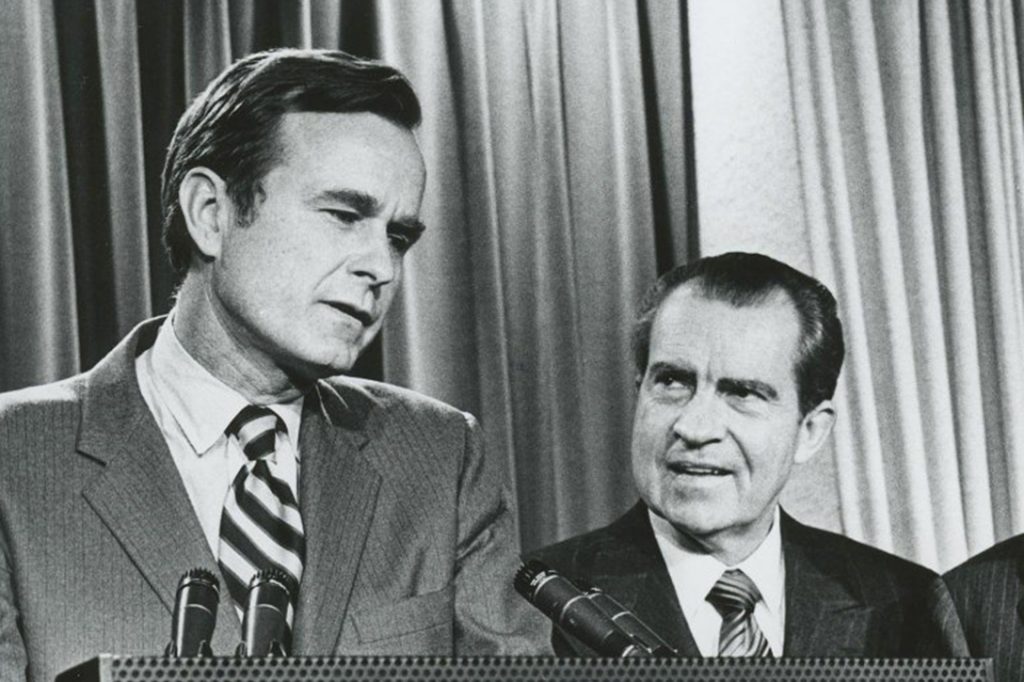
George H. W. Bush, Richard Nixon. 1970. Photo credit:The White House / Nixon Foundation
To its credit, the Washington Post in these years had other staffers doing some of the best reporting on the intelligence establishment. Perhaps the most revealing work came prior to Nixon’s tenure, while Woodward was still doing his naval service. In a multipart, front-page series by Richard Harwood in early 1967, the paper began reporting the extent to which the CIA had penetrated civil institutions not just abroad, but at home as well.
“It was not enough for the United States to arm its allies, to strengthen governmental institutions, or to finance the industrial establishment through economic and military programs,” Harwood wrote.
“Intellectuals, students, educators, trade unionists, journalists and professional men had to be reached directly through their private concerns.” Journalists too. Even Carl Bernstein later wrote about the remarkable extent of the CIA’s penetration of newsrooms, detailing numerous examples, in a 1977 Rolling Stone article. As for the Post itself, Bernstein wrote:
When Newsweek was purchased by the Washington Post Company, publisher Philip L. Graham was informed by Agency officials that the CIA occasionally used the magazine for cover purposes, according to CIA sources. “It was widely known that Phil Graham was somebody you could get help from,” said a former deputy director of the Agency. “Frank Wisner dealt with him.” Wisner, deputy director of the CIA from 1950 until shortly before his suicide in 1965, was the Agency’s premier orchestrator of “black” operations, including many in which journalists were involved. Wisner liked to boast of his “mighty Wurlitzer,” a wondrous propaganda instrument he built, and played, with help from the press. Phil Graham was probably Wisner’s closest friend. But Graham, who committed suicide in 1963, apparently knew little of the specifics of any cover arrangements with Newsweek, CIA sources said. In 1965-66, an accredited Newsweek stringer in the Far East was in fact a CIA contract employee earning an annual salary of $10,000 from the Agency, according to Robert T. Wood, then a CIA officer in the Hong Kong station. Some Newsweek correspondents and stringers continued to maintain covert ties with the Agency into the 1970s, CIA sources said. Information about Agency dealings with the Washington Post newspaper is extremely sketchy. According to CIA officials, some Post stringers have been CIA employees, but these officials say they do not know if anyone in the Post management was aware of the arrangements.
When the Watergate burglary story broke, Bob Woodward got the assignment, in part, his editor Barry Sussman recalled, because he never seemed to leave the building. “I worked the police beat all night,” Woodward said in an interview with authors Tom Rosenstiel and Amy S. Mitchell, “and then I’d go home — I had an apartment five blocks from the Post — and sleep for a while. I’d show up in the newsroom around 10 or 11 [in the morning] and work all day too. People complained I was working too hard.” So when the bulletin came in, Woodward was there. The result was a front-page account revealing that E. Howard Hunt’s name appeared in the address book of one of the burglars and that a check signed by Hunt had been found in the pocket of another burglar, who was Cuban. It went further:
Hunt, Woodward reported, worked as a consultant to White House counsel Charles Colson. Thus, Woodward played a key role in tying the burglars to Nixon. Woodward would later explain in All the President’s Men (coauthored with Bernstein) that to find out more about Hunt, he had “called an old friend and sometimes source who worked for the federal government.” His friend did not like to be contacted at this office and “said hurriedly that the break-in case was going to ‘heat up,’ but he couldn’t explain and hung up.” Thus began Woodward’s relationship with Deep Throat, that mysterious source who, Woodward would later report, served in the executive branch of government and had access to information in the White House and CREEP.
Based on tips from Deep Throat, Woodward and Bernstein began to “follow the money,” writing stories in September and October 1972 on a political “slush fund” linked to CREEP. One story reported that the fund had financed the bugging of the Democratic Party’s Watergate headquarters as well as other intelligence-gathering activities. While Nixon coasted to a landslide victory over the liberal Democrat George McGovern, the story seemed to go on hiatus. But just briefly.
Related front page panorama photo credit: Adapted by WhoWhatWhy from Watergate (Indutiomarus / Wikimedia), Bob Woodward (Jim Wallace / Public.Resource.Org / Flickr – CC BY 2.0) and Richard Nixon (The White House / Nixon Library).
